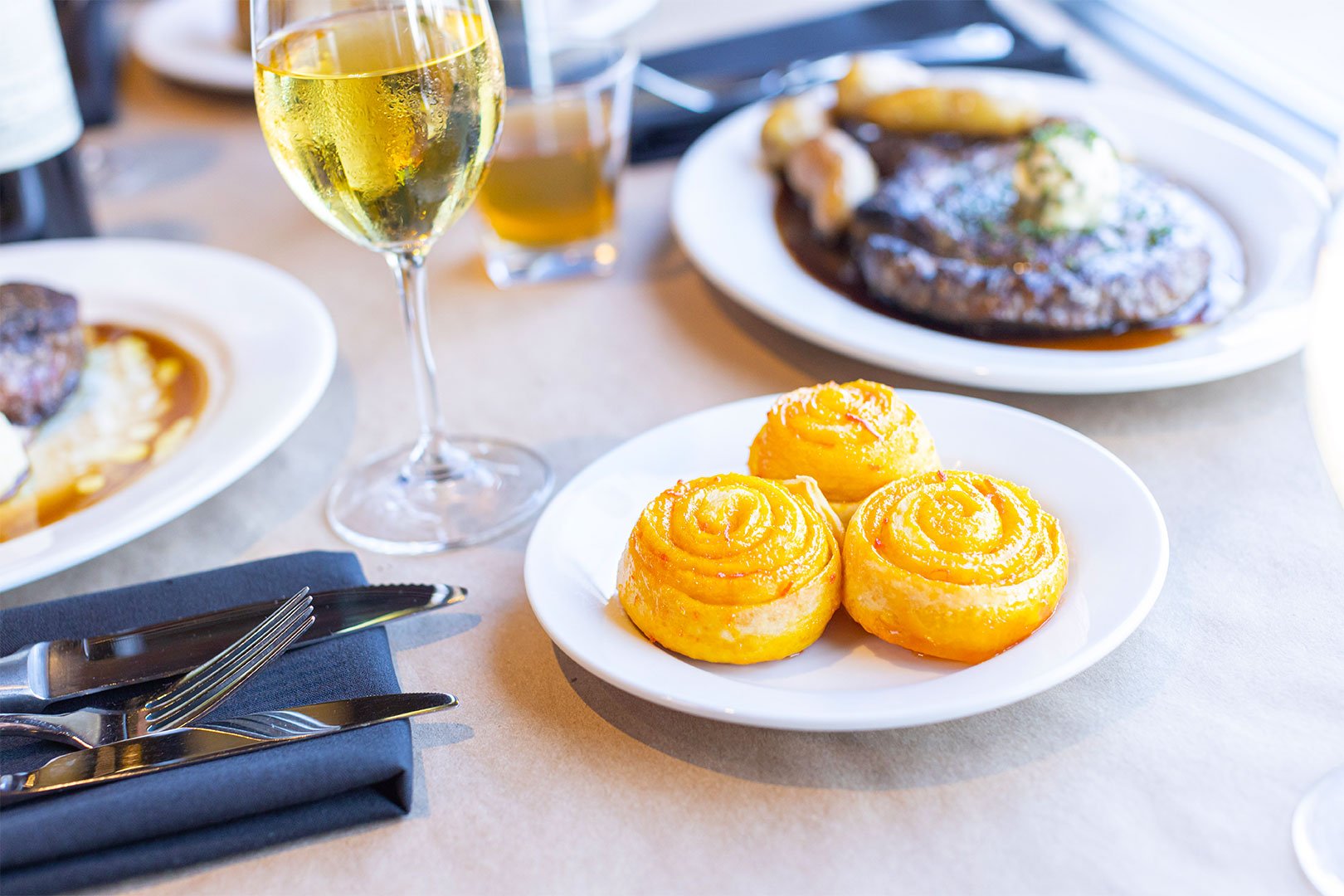Widely regarded as a staple of the American dinner table, steak didn’t hit our grills until the late 19th century. Its history is a rich one, and we’re not just talking about its taste. While the term is typically used to describe large cuts from the hindquarters of an animal, it’s not restricted to meat—there are even portobello mushroom steaks available!
Here, you’ll learn how the term came into use as a reference to beef, and we will explore the long and storied history of our favorite main dish: steak.
Steak and Its Origins
As shown in cave paintings depicting auroch hunts, we’ve enjoyed beef since prehistory. Cattle were first domesticated in approximately 8000 BC, and that’s when beef consumption became commonplace. Today, it’s tough to imagine the world without a great steak restaurant (unless you’re a vegetarian, of course).
The word we commonly use to describe thick, juicy cuts of meat cooked over an open flame has Scandinavian and Italian roots. While a person in Norway, Denmark, or Sweden may have enjoyed a “steikja”, an Italian would have called the dish a “bistecca”. Taken mainly from the rear flank of the animal and fried or grilled, most early steaks were served with plenty of wine or beer. The steak then spread throughout greater Europe, with the term being used to refer to any readily available hindquarter cut of meat.
Most of us think, “I’d be angry if I went out to dinner, ordered a steak, and got something besides beef!”. That’s understandable. In other parts of the world, diners ask for tuna steaks and other things—but here in Cullman (and the rest of the country), we typically think of beef when we envision a sizzling hot, delicious steak.
Steak in America
Introduced to the North American continent by the Spanish in the early 1500s, cattle were once new to the United States. It took some time for settlers to warm up to them, but it happened. As time went on, people moved away from the country’s coasts to live further inland. With abundant land and resources, many started farms—which fed city-dwellers who lacked the skill, time, and space to grow food.
In America’s cities, manufacturing and processing were going full steam ahead. Without time to spend in front of a stove, busy workers needed food to eat and places to do it. As the demand for meat grew, many farmers turned to cattle as a food and revenue source, giving us the steaks we all know and love. We’ve saved you a seat at the table, so book your reservation today.
The Beefsteak Banquet
While steaks have been a crucial part of world cultures for hundreds of years, they have a shorter history in America. As mentioned above, cattle didn’t come to the United States until the 16th century, and steaks didn’t become popular until the 1800s.
We all know that food brings us together—and a hearty meal including a juicy, tender steak is a great unifier. In the late 18th century, beefsteak banquets were popular among those living in New York City. Often held as political fundraisers and everyday celebrations, these banquets were for men only and rarely offered napkins or cutlery. Today, steak is truly for everyone. Oh, how far we’ve come!
Fine Dining With a Dash of Convenience
In the past, the prices of meals in teahouses, taverns, and hotels varied widely, and truly fine dining was a rarity outside of five-star hotels. During the late 1800s, however, elegant restaurants opened everywhere, and many became famous for their delicious steaks. Most would have been considered upper-echelon steakhouses by modern standards.
America’s Steakhouses
Today, most of us view steak as a special-occasion dish, with meat quality being of primary importance. While the old-fashioned beefsteak banquet was once popular among the country’s working-class men, steakhouses quickly became hangouts for the rich and famous.
New York City’s Delmonico (a place with a cut of steak named after it) is almost universally considered America’s first fine-dining establishment—but it wasn’t the world’s first steakhouse. Comparable establishments, known as chophouses, have been open in England since the 17th century. America’s steakhouses, thankfully, were typically more upscale than the tavern-style eateries found in the UK.
Not only are our steakhouses more formal and refined than the chophouses and beefsteak banquets of old, but they are also accessible to women. As meat became easier to raise, harvest, and transport, steakhouses grew in popularity—and they can be found all over the country today.
Steak’s Evolution: From the Fire to Your Plate
Although steak was once considered a luxury food reserved for the rich, it’s become a common choice among everyday diners. Thanks to advancements in manufacturing, processing, and agriculture, these cuts are accessible to everyone. Over the years, shifting availability and preparation methods have showcased steak’s versatility.
Steakhouses: Where Are They Popular?
The modern steakhouse has become a mainstay of American culture and a memorable dining experience among people from every walk of life. While they’re found in cities worldwide, certain areas have become nearly synonymous with steak. Texas has Houston, Dallas, and Austin, and you’ll find great steaks everywhere from Oklahoma to New York. The best steaks, however, are found right here in Cullman, Alabama. At All Steak Restaurant, you’ll enjoy the memorable dining experience you deserve. Book your table today!
Fine Dining and Delicious Steaks in Cullman
Steak has a rich history in the United States, and we’re proud to be a part of it. If you’re in the area and want to experience fine dining as it was meant to be, we offer you a seat at our table.
At All Steak Restaurant, we proudly serve the best cuts of steak, fresh, juicy, and made-to-order. With delicious side dishes, memorable wine pairings, and great appetizers, you’re sure to have a great meal. Reserve a table online or call us to learn more about our menu. Great steak awaits!

